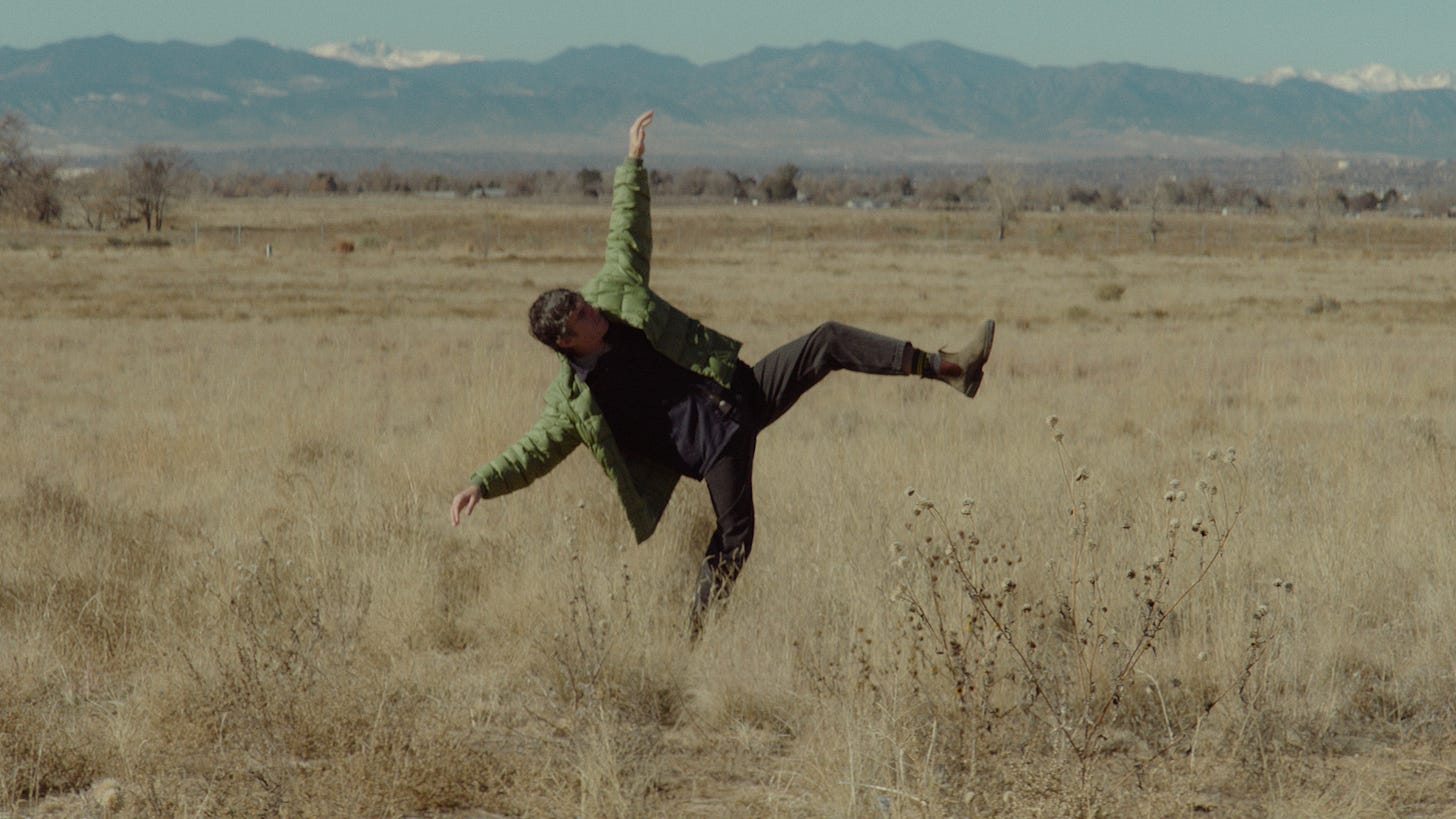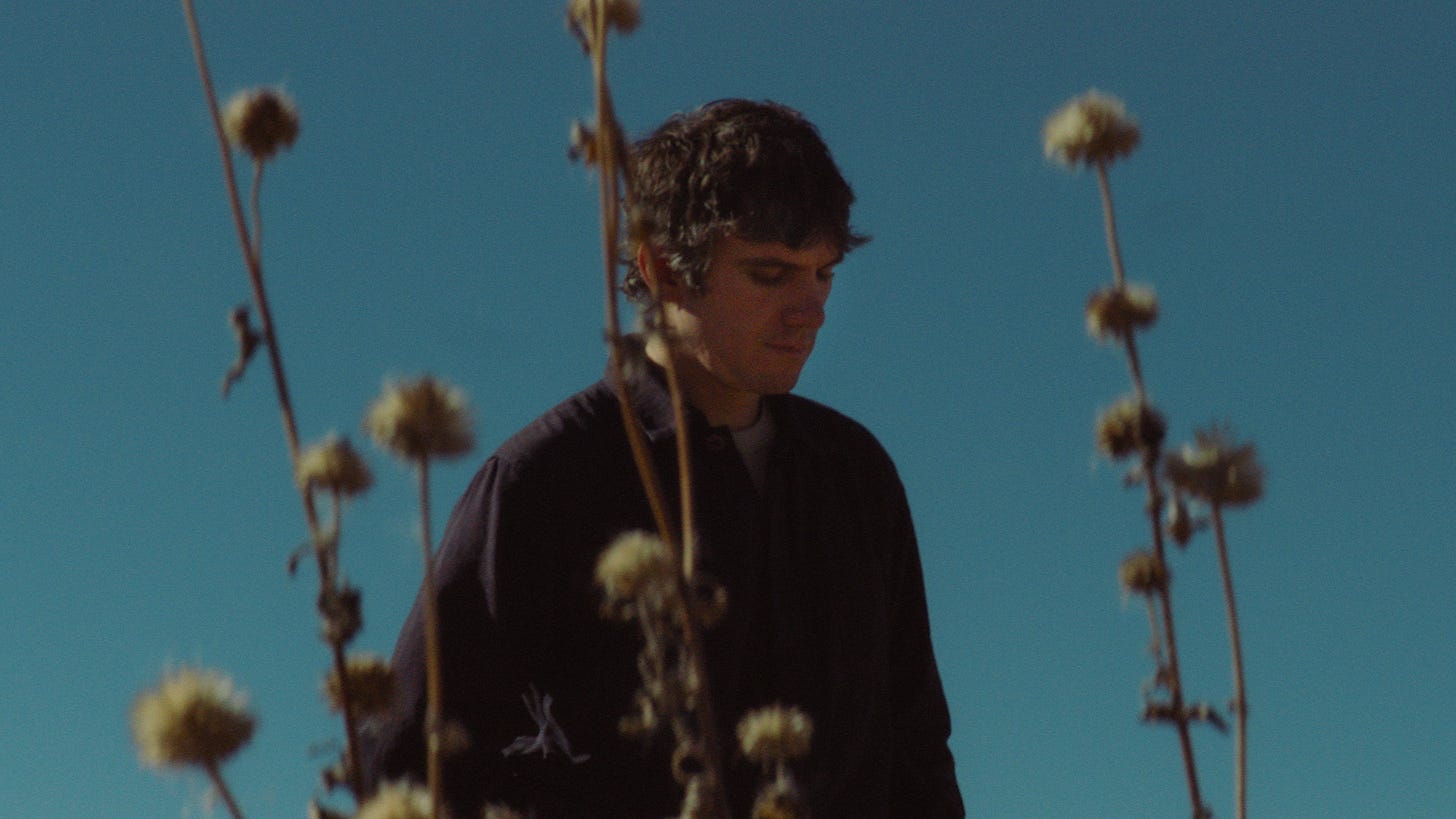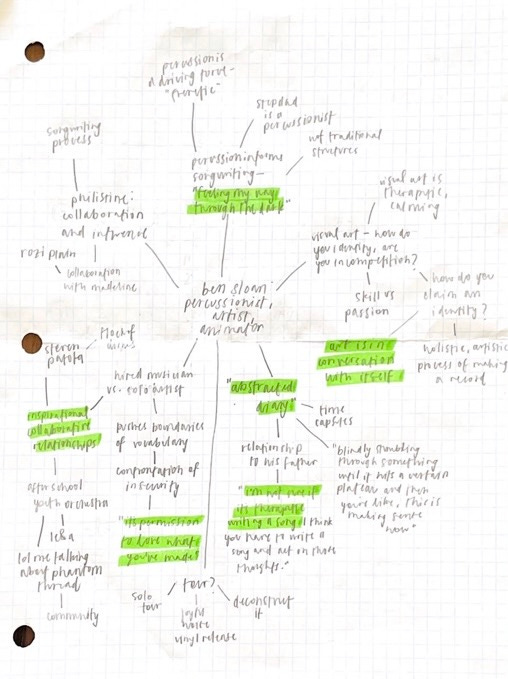This interview has been edited for clarity.
The Internet is an incredible invention. Last week, Ben and I found out we’re working on a music video together–me from a studio in California and him from his home in Colorado. On January 20, 2023, I sent him an Instagram DM saying that I loved his work and within a month, we were talking via Zoom, the distillation of which conversation you’re reading now. We discussed identity as artists and musicians, being proud of yourself and your work, writing as process and as product. I imagined the soundwaves of our voices becoming electric currents becoming soundwaves again on the other side (I am not a scientist). Looking at Ben gesticulating enthusiastically on my little laptop screen during our interview, I was struck by the fact that we were sort of friends now, entirely via online correspondence. Ben, did you hear that? We’re friends now.
muted colors (2023) is Ben Sloan’s debut solo album, an “abstracted diary” of nearly a decade of his life. When I heard the lead single “1e&a”, which features my friend and hero Madeline Kenney, I was immediately taken with the prowess, the confidence of it; muted colors does not necessarily sound like a debut record. Some cursory Googling reveals that Ben is a prolific percussionist and producer who has worked with The National, Moses Sumney, Beth Orton, and Rozi Plain, among others. The percussion shines on muted colors; the songs are propulsive.
“If I’m following my intuition it’s usually from a rhythmic perspective,” Ben said. I admired immediately in his songwriting the way that he shapes songs around rhythms, rather than melodies or lyrics. Unlike most songwriters, he starts by sitting down at the drum kit, which I see crouching behind him like a loyal dog, or a ghost. The kit was his stepfather’s, passed down to him along with the skill to play it. He gestures towards it familiarly sometimes while he’s developing a point. “With drumming it becomes really intuitive for me. It very much informs how a song structure happens.”
“If I’m following my intuition it’s usually from a rhythmic perspective”
muted colors lacks a lot of traditional structure; there are no choruses or verses, only rhythms and new rhythms, Ben explains. I love that about the record, but Ben mentions that he wants to grow into something more mellow in the future: “It creates a very frenetic pace, and the music that’s resonating with me now has been a lot more subdued.” Artists like Moses Sumney, whose solo music is beyond subdued, downright hushed at points, contribute the languid energy Ben is seeking. “Having somebody else’s voice changes what instrumentation I go for,” he says, in reference to Moses’ vocals on “Philistine” and the quiet moments in that song in particular, “I don’t want to get in the way too much.”
Five of the ten songs on the record feature other artists. Ben usually comes up with an idea and sends it, rather fresh, to someone who he envisions perhaps appearing on the finished track. For “1e&a”, he tells me that he had a sample, an organ, and a drum beat. “[Madeline] unlocked the song,” he said, recounting how she wrote the lyrics and melody as well as contributed synths, “I got really lucky with these collaborations.” The artists featured on this record are mostly people that Ben met touring or online, people he now considers friends; the network grows exponentially with each new connection. The songs sound like they were made for the artists featured on them—Ben has an undeniable talent for shapeshifting.
He tells me his work as a percussionist and producer informed the sound of the record, and the development of his personal musical style in general: “It pushes me in a direction that maybe I wouldn't go otherwise, and then all of a sudden I have a whole new vocabulary of sounds to explore.” That expansive vocabulary makes muted colors endlessly interesting, a playground of music and noise.
Making a solo record is an exercise in confidence and self-assurance; you have to make every decision yourself, steer the ship through every turn. Ben finds that he “gets confronted with insecurity in the process” of his work for other artists, which prepared him for writing his own record. “In the end, I ultimately send something and I might feel a little bit less proud of it until I get some feedback. When they say, this is great, then I'm like, yeah, it is great. It's like permission to love what you made.”
When I ask him about his most impactful collaborative relationships, he brings up his students in the youth orchestra that he used to direct. “Collaborating is fundamental. You have to work with the students,” he said. The sample from “1e&a” is a recording of his students counting out a piece of music. He was adamant about keeping it in the record; “it's like a testament to what has helped me grow as a human and like as a musician.”
“It's like permission to love what you made”
Throughout our conversation, Ben and I keep returning to the question of artistry. Ben illustrated and animated the video visuals for his record, concurrently produced and drummed on other people’s work while making it, was an educator throughout, scored commercial work—and I’m sure there are other creative pursuits he didn’t even mention to me in this interview. I explain that I sometimes feel pulled in many different directions–music, writing, visual art. I ask him if he ever struggles with his identity as a musician or an artist, if he ever feels like the disparate parts of his artistic practice are in competition with one another. “Lately I've had way less drive to make music because I find the process of making visual art much more therapeutic,” he admits. “Making visual art brings me a lot of peace, but I don't know how to claim it so much. Making music, which I feel much more confident in in certain ways, has been stressing me the fuck out lately, so I'm less inclined to do it.
“But sometimes making a little visual, a loop or an animation, for me is an impetus to go and finish the song that I'm doing it for,” he says, countering himself. “It does feed into itself in certain ways, which I really appreciate.” I admire how much Ben’s art is in conversation with itself, how the practices he pursues are aligned in many ways. muted colors is an expression of a personal and professional journey, an artist’s record through and through.
The album spans seven years of Ben’s life; I ask him about how such an extended timeline impacted what he calls an “imprint of emotion” on the songs. “When you go in and you start creating on a particular instrument, I think your emotional state informs [the writing], so the songs are like these little time capsules in a way,” he elaborates. Much of the album is about his difficult relationship with his father, who passed between the time of our conversation and the release of the record. Initially he describes the process of creating muted colors as therapeutic, but he muses later on, “I'm not sure if it's therapeutic writing a song. I think you have to write a song and then act on those thoughts.”
“A lot of this record was really feeling my way through the dark,” Ben tells me at the beginning of our conversation. From the listener’s perspective, it feels as if Ben is leading us through that darkness; the record stops to explore different aspects of pain and doubt, but ultimately comes out the other side. The joyful moments–the children’s voices on “1e&a”, the frenzied synths and drums on “Light feet”, the quietly confident waves of Felicia Douglass’ voice on “Calm loop”—are flashes of light in the dark, reminders that artistic expression provides catharsis. muted colors creates a world out of that expression, a world very much like our own.








wow soo glad I found this record <3 thanks for the great piece and as always incredible recommendation